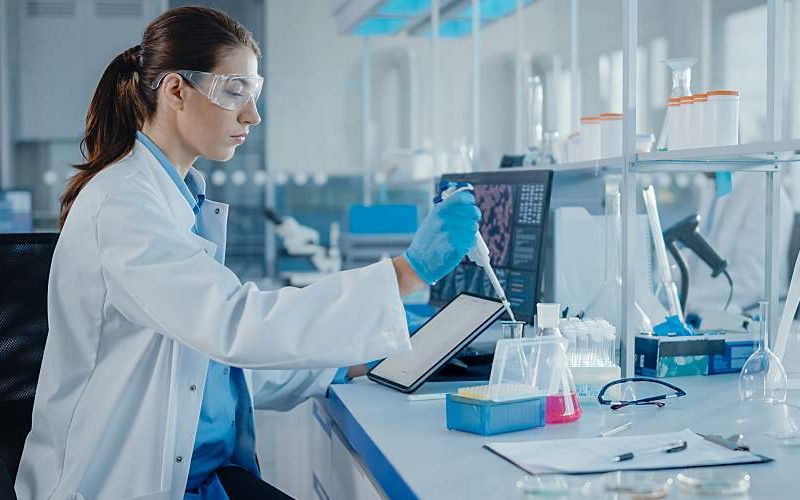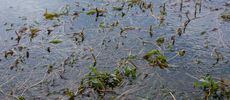Chain of Custody Basics for Water Labs


Proper chain of custody procedures are essential for any water lab seeking Environmental Protection Agency (EPA) Laboratory Certification for Drinking Water. That's because drinking water compliance monitoring data serves as the basis for legal enforcement, meaning the data must be legally defensible in a courtroom.
Consider, for example, what would happen if a water utility took an industrial polluter to court but couldn't prove the samples it procured had been handled properly. It's possible the case would be thrown out, even if the defendant had released a large amount of chemicals in local waterways.
Chain of custody encompasses a range of procedures that ensure the accurate tracing of sample possession and handling from collection to destruction. Lab procedures are an essential part of this process and should be documented for both internal and external audits.
Here's what you need to know about chain of custody, including key procedures and how to ensure they're followed.
What Defines Custody?
According to the EPA Manual for the Certification of Laboratories Analyzing Drinking Water, a water sample is considered in someone's custody only if it is:
- In a person's physical possession.
- Within view, after being in physical possession.
- In physical possession before being locked up to prevent tampering.
- Kept in a secured area restricted to authorized personnel.
Chain of custody forms track the movement of samples from start to finish, providing an accurate record of who handled samples and how they handled them.
Sample Collection and Transportation
Chain of custody starts at the point of sample collection. The EPA manual details the data that must be collected on field records, such as the sample or log number, source of the sample, preservative used, analysis required, and comments, as well as how samples should be labeled. Samples should be transported in a sealed and labeled transportation case. When locked or sealed chests are impractical, tamper-evident seals should be placed around individual sample container caps.
Custody transfers also require documentation, with each change in possession recorded on the custody form. Important steps for your lab at this stage include:
- Verifying that all samples your lab received include the appropriate chain of custody record
- Retaining all shipping receipts as part of the official documentation
- Recording any evidence of tampering upon receipt
- Locking samples in a designated area if the appropriate personnel aren't available to receive them
Sample Control Procedure
Sample control procedures start with sample receipt and continue until the sample is destroyed. The EPA recommends several specific procedures:
- A specific employee must be designated custodian as well as a designated alternate in case of the designated custodian's absence. The custodian must receive all incoming samples, sign forms, and retain them as permanent records.
- The custodian must keep a permanent logbook recording chain of custody information as well as each sample's movement within the lab.
- The lab should have a designated custody room that's clean and dry, isolated, and/or refrigerated. It must be able to be locked from the outside.
- The custodian is responsible for the proper storage and maintenance of samples requiring special handling, such as heat- or light-sensitive samples.
- The custodian must directly hand over samples to the employee performing the analysis.
- The lab must be secured and restricted to authorized personnel.
- Lab employees are responsible for handling and custody of samples upon receipt. They should be ready to testify in court that samples were in their possession and view or secured in the lab from the moment the sample was received through completed analysis.
- Analysts must return unused sample material with all labels to the custodian. Sample material must remain in the custody room until the custodian has permission to destroy the sample.
- Samples may be destroyed only upon the order of the responsible lab employee once it's confirmed the information is no longer needed or samples are no longer valid (i.e., the maximum holding time has elapsed).
- Labs should establish standard operating procedures (SOPs) for internal audits that include a review of sample control records.
Internal Audit and Records Review
Internal audits are essential to EPA certification, as well as state and ISO certification. Your internal audit should cover chain of custody and sample control SOPs, reviewing records for accuracy, completeness, and traceability.
Best practices dictate that all SOPs be reviewed, signed, and dated annually. An effective internal audit program minimizes compliance issues and streamlines lab certification, also providing added reliability in the event that sample data becomes subject to litigation.
The strict requirements outlined here are one reason some labs choose to not offer chain of custody testing. Those that do, however, need documented procedures aligned with EPA requirements, plus an internal audit program to ensure compliance. With these pieces in place, labs can demonstrate a high level of reliability while having the peace of mind that their data will hold up in a courtroom.






